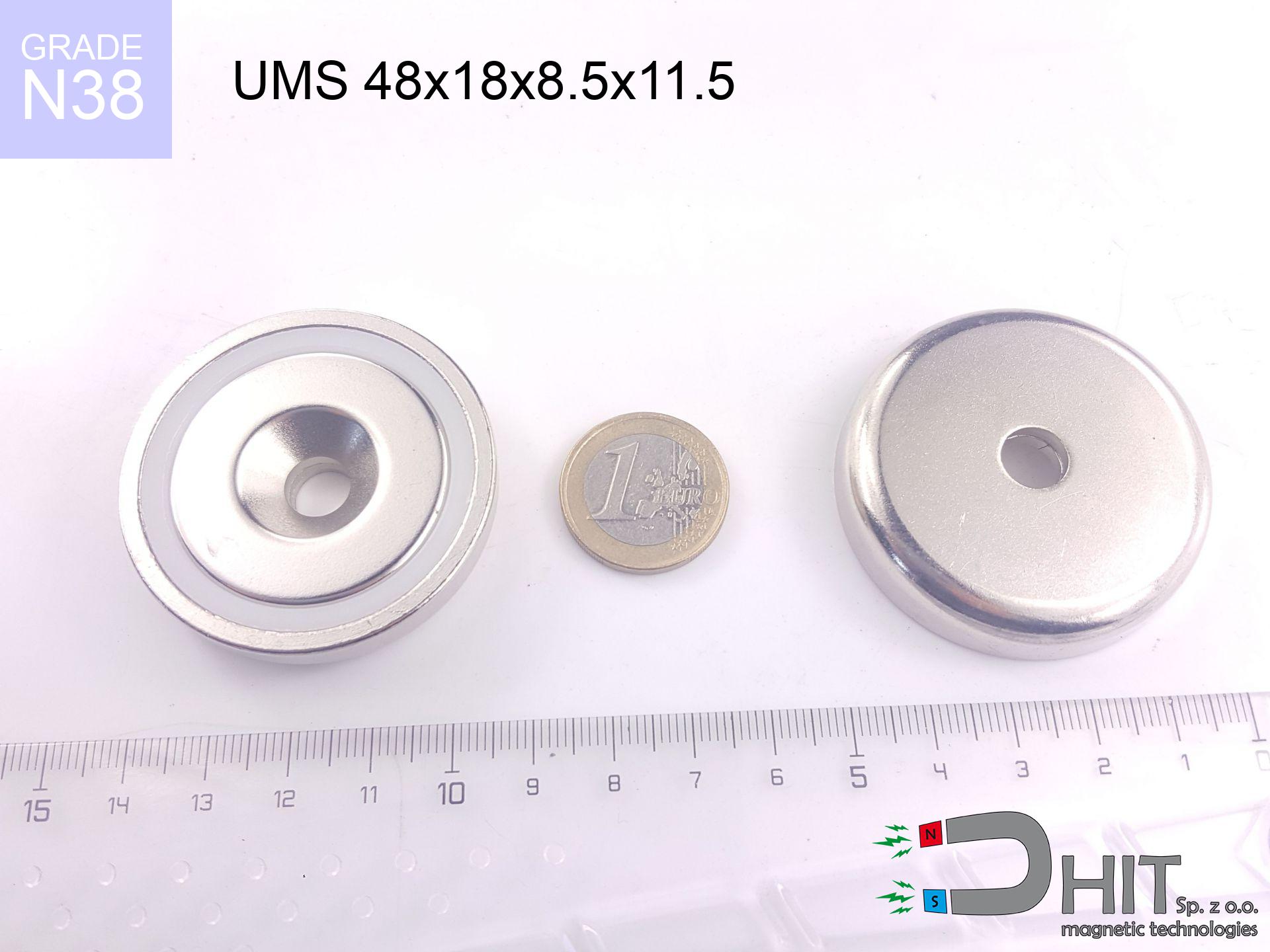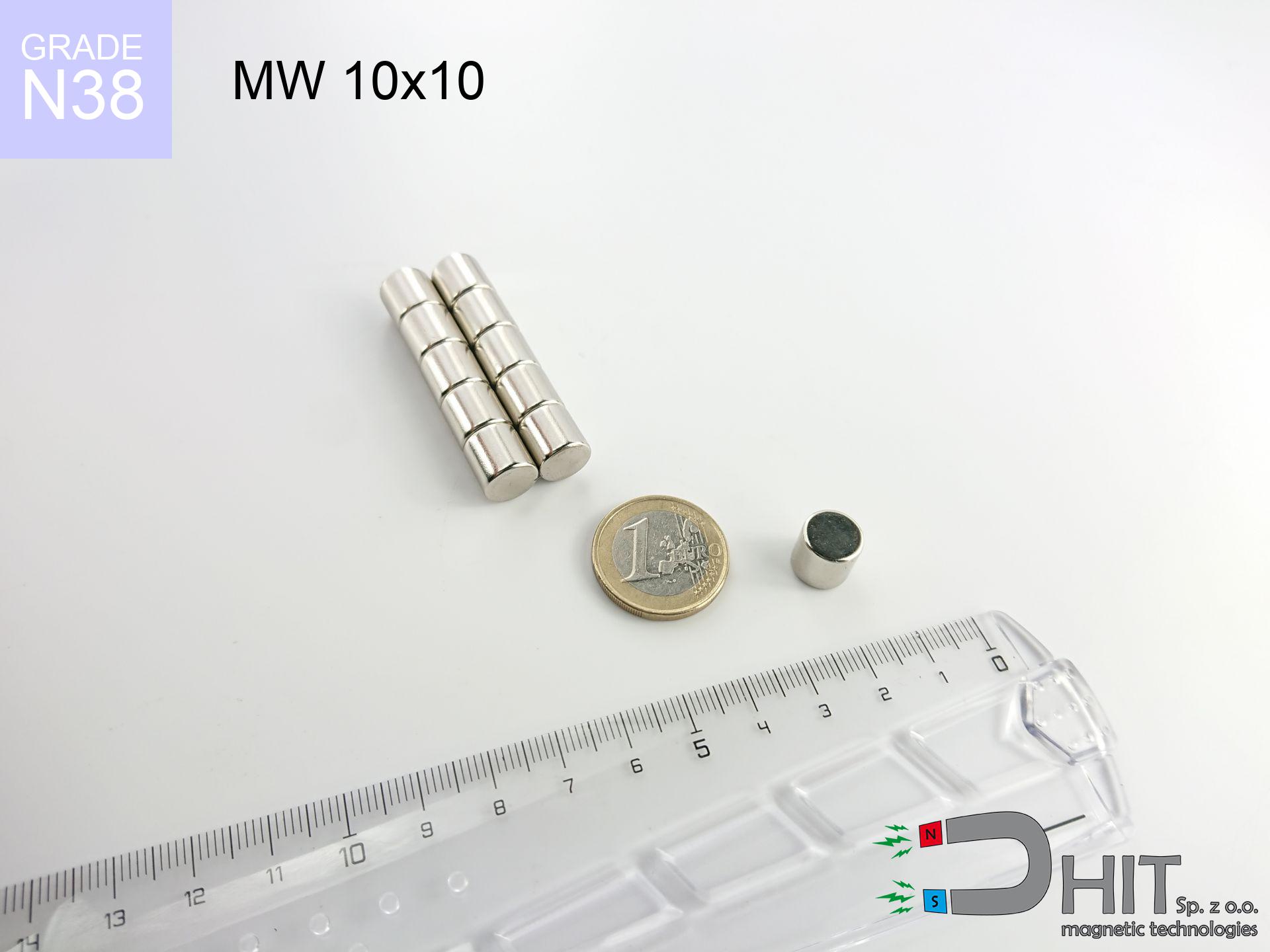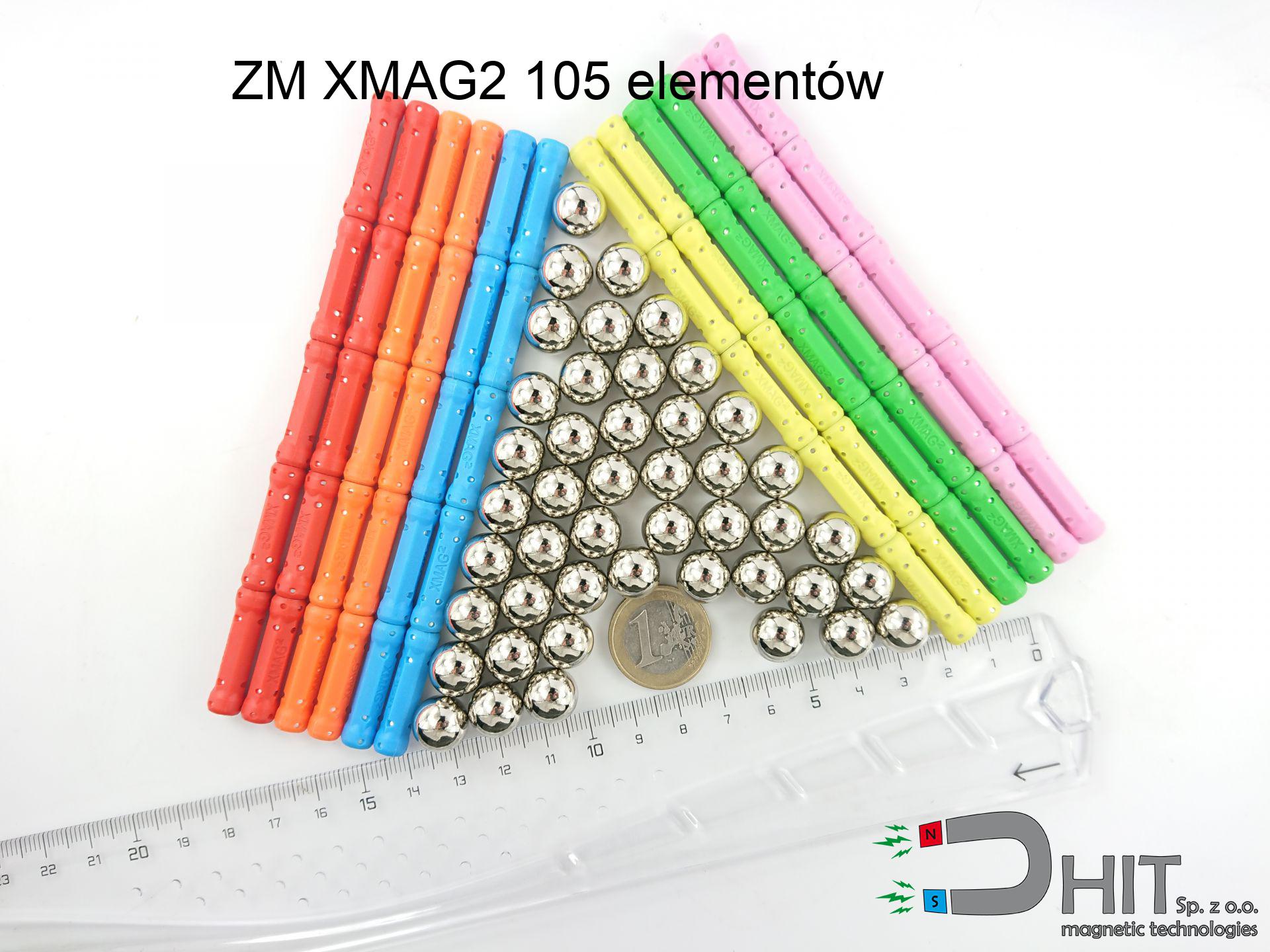UMS 48x18x8.5x11.5 / N38 - conical magnetic holder
conical magnetic holder
Catalog no 220403
GTIN/EAN: 5906301814221
Diameter Ø
48 mm [±1 mm]
cone dimension Ø
18x8.5 mm [±1 mm]
Height
11.5 mm [±1 mm]
Weight
125 g
Magnetization Direction
↑ axial
Load capacity
68.00 kg / 666.85 N
Coating
[NiCuNi] Nickel
44.92 ZŁ with VAT / pcs + price for transport
36.52 ZŁ net + 23% VAT / pcs
bulk discounts:
Need more?Can't decide what to choose?
Give us a call
+48 888 99 98 98
otherwise send us a note using
our online form
the contact section.
Strength along with structure of a neodymium magnet can be analyzed with our
magnetic calculator.
Same-day shipping for orders placed before 14:00.
UMS 48x18x8.5x11.5 / N38 - conical magnetic holder
Specification / characteristics UMS 48x18x8.5x11.5 / N38 - conical magnetic holder
| properties | values |
|---|---|
| Cat. no. | 220403 |
| GTIN/EAN | 5906301814221 |
| Production/Distribution | Dhit sp. z o.o. |
| Country of origin | Poland / China / Germany |
| Customs code | 85059029 |
| Diameter Ø | 48 mm [±1 mm] |
| cone dimension Ø | 18x8.5 mm [±1 mm] |
| Height | 11.5 mm [±1 mm] |
| Weight | 125 g |
| Magnetization Direction | ↑ axial |
| Load capacity ~ ? | 68.00 kg / 666.85 N |
| Coating | [NiCuNi] Nickel |
| Manufacturing Tolerance | ±1 mm |
Magnetic properties of material N38
| properties | values | units |
|---|---|---|
| remenance Br [min. - max.] ? | 12.2-12.6 | kGs |
| remenance Br [min. - max.] ? | 1220-1260 | mT |
| coercivity bHc ? | 10.8-11.5 | kOe |
| coercivity bHc ? | 860-915 | kA/m |
| actual internal force iHc | ≥ 12 | kOe |
| actual internal force iHc | ≥ 955 | kA/m |
| energy density [min. - max.] ? | 36-38 | BH max MGOe |
| energy density [min. - max.] ? | 287-303 | BH max KJ/m |
| max. temperature ? | ≤ 80 | °C |
Physical properties of sintered neodymium magnets Nd2Fe14B at 20°C
| properties | values | units |
|---|---|---|
| Vickers hardness | ≥550 | Hv |
| Density | ≥7.4 | g/cm3 |
| Curie Temperature TC | 312 - 380 | °C |
| Curie Temperature TF | 593 - 716 | °F |
| Specific resistance | 150 | μΩ⋅cm |
| Bending strength | 250 | MPa |
| Compressive strength | 1000~1100 | MPa |
| Thermal expansion parallel (∥) to orientation (M) | (3-4) x 10-6 | °C-1 |
| Thermal expansion perpendicular (⊥) to orientation (M) | -(1-3) x 10-6 | °C-1 |
| Young's modulus | 1.7 x 104 | kg/mm² |
Material specification
| iron (Fe) | 64% – 68% |
| neodymium (Nd) | 29% – 32% |
| boron (B) | 1.1% – 1.2% |
| dysprosium (Dy) | 0.5% – 2.0% |
| coating (Ni-Cu-Ni) | < 0.05% |
Sustainability
| recyclability (EoL) | 100% |
| recycled raw materials | ~10% (pre-cons) |
| carbon footprint | low / zredukowany |
| waste code (EWC) | 16 02 16 |
Other deals
Pros and cons of rare earth magnets.
Benefits
- They virtually do not lose strength, because even after 10 years the decline in efficiency is only ~1% (in laboratory conditions),
- They have excellent resistance to magnetism drop due to external magnetic sources,
- The use of an aesthetic layer of noble metals (nickel, gold, silver) causes the element to have aesthetics,
- Neodymium magnets deliver maximum magnetic induction on a small surface, which allows for strong attraction,
- Through (adequate) combination of ingredients, they can achieve high thermal strength, allowing for action at temperatures reaching 230°C and above...
- Due to the potential of accurate forming and customization to specialized needs, neodymium magnets can be created in a variety of shapes and sizes, which increases their versatility,
- Huge importance in high-tech industry – they are commonly used in mass storage devices, drive modules, advanced medical instruments, and industrial machines.
- Compactness – despite small sizes they offer powerful magnetic field, making them ideal for precision applications
Cons
- They are fragile upon too strong impacts. To avoid cracks, it is worth securing magnets using a steel holder. Such protection not only protects the magnet but also increases its resistance to damage
- Neodymium magnets decrease their power under the influence of heating. As soon as 80°C is exceeded, many of them start losing their power. Therefore, we recommend our special magnets marked [AH], which maintain durability even at temperatures up to 230°C
- They rust in a humid environment. For use outdoors we recommend using waterproof magnets e.g. in rubber, plastic
- Limited possibility of producing threads in the magnet and complex shapes - recommended is casing - magnetic holder.
- Possible danger related to microscopic parts of magnets are risky, when accidentally swallowed, which is particularly important in the context of child health protection. Furthermore, tiny parts of these products are able to disrupt the diagnostic process medical in case of swallowing.
- Due to neodymium price, their price exceeds standard values,
Lifting parameters
Magnetic strength at its maximum – what affects it?
- on a block made of mild steel, effectively closing the magnetic field
- possessing a thickness of at least 10 mm to avoid saturation
- characterized by lack of roughness
- with total lack of distance (no impurities)
- during pulling in a direction perpendicular to the mounting surface
- at room temperature
Practical lifting capacity: influencing factors
- Space between magnet and steel – every millimeter of distance (caused e.g. by varnish or dirt) drastically reduces the magnet efficiency, often by half at just 0.5 mm.
- Loading method – declared lifting capacity refers to detachment vertically. When applying parallel force, the magnet holds much less (typically approx. 20-30% of maximum force).
- Metal thickness – the thinner the sheet, the weaker the hold. Magnetic flux penetrates through instead of converting into lifting capacity.
- Metal type – different alloys reacts the same. High carbon content worsen the attraction effect.
- Plate texture – ground elements guarantee perfect abutment, which increases field saturation. Rough surfaces reduce efficiency.
- Heat – NdFeB sinters have a negative temperature coefficient. At higher temperatures they lose power, and at low temperatures they can be stronger (up to a certain limit).
Lifting capacity testing was carried out on plates with a smooth surface of optimal thickness, under perpendicular forces, whereas under attempts to slide the magnet the lifting capacity is smaller. Additionally, even a slight gap between the magnet’s surface and the plate reduces the lifting capacity.
Allergic reactions
Allergy Notice: The Ni-Cu-Ni coating contains nickel. If redness appears, immediately stop working with magnets and use protective gear.
Caution required
Exercise caution. Rare earth magnets act from a long distance and snap with massive power, often faster than you can react.
Power loss in heat
Regular neodymium magnets (grade N) undergo demagnetization when the temperature goes above 80°C. Damage is permanent.
GPS Danger
Navigation devices and smartphones are highly sensitive to magnetic fields. Close proximity with a powerful NdFeB magnet can permanently damage the sensors in your phone.
Threat to electronics
Powerful magnetic fields can erase data on credit cards, HDDs, and storage devices. Keep a distance of at least 10 cm.
Product not for children
Product intended for adults. Small elements can be swallowed, causing serious injuries. Keep away from children and animals.
Dust explosion hazard
Powder created during machining of magnets is self-igniting. Do not drill into magnets without proper cooling and knowledge.
Risk of cracking
NdFeB magnets are sintered ceramics, meaning they are fragile like glass. Impact of two magnets will cause them cracking into small pieces.
Bone fractures
Big blocks can break fingers in a fraction of a second. Do not put your hand between two attracting surfaces.
Life threat
Medical warning: Strong magnets can turn off pacemakers and defibrillators. Do not approach if you have electronic implants.









